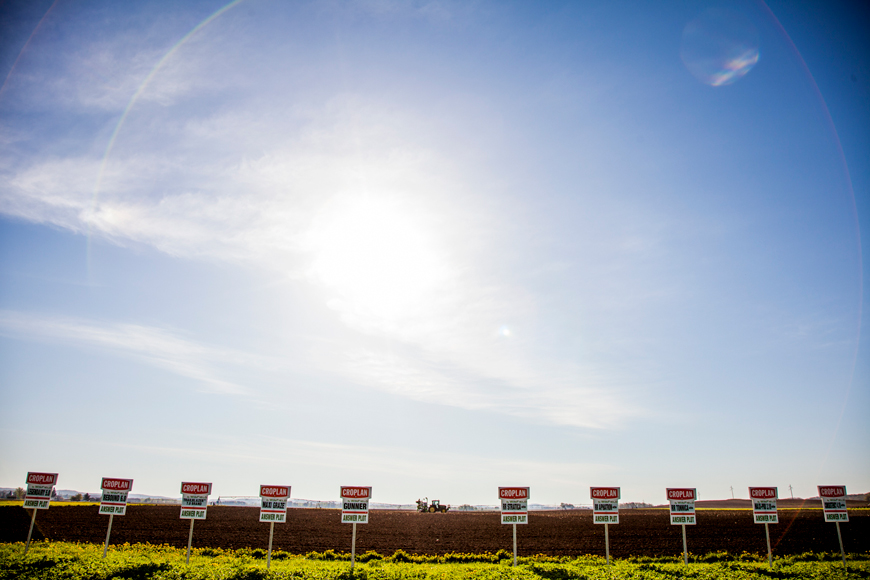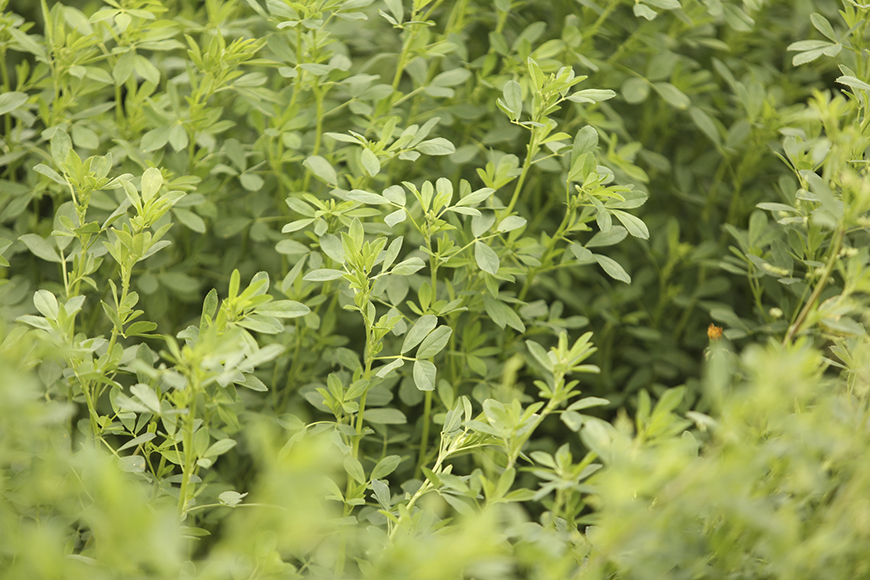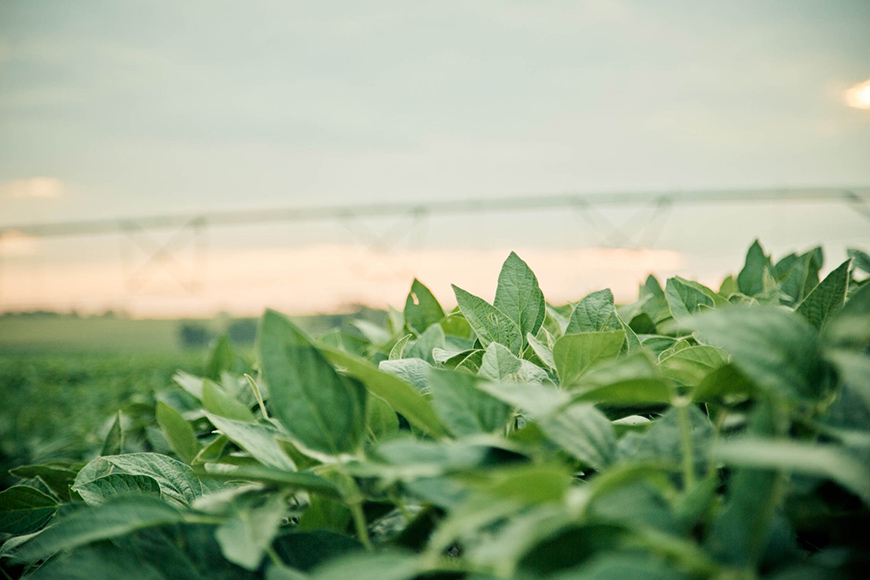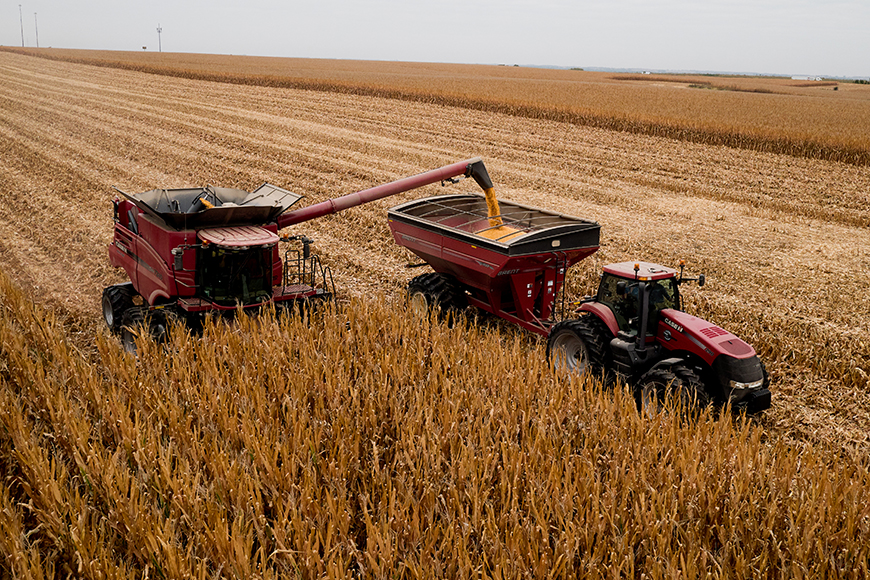What Last Season Taught Us About Drought Management
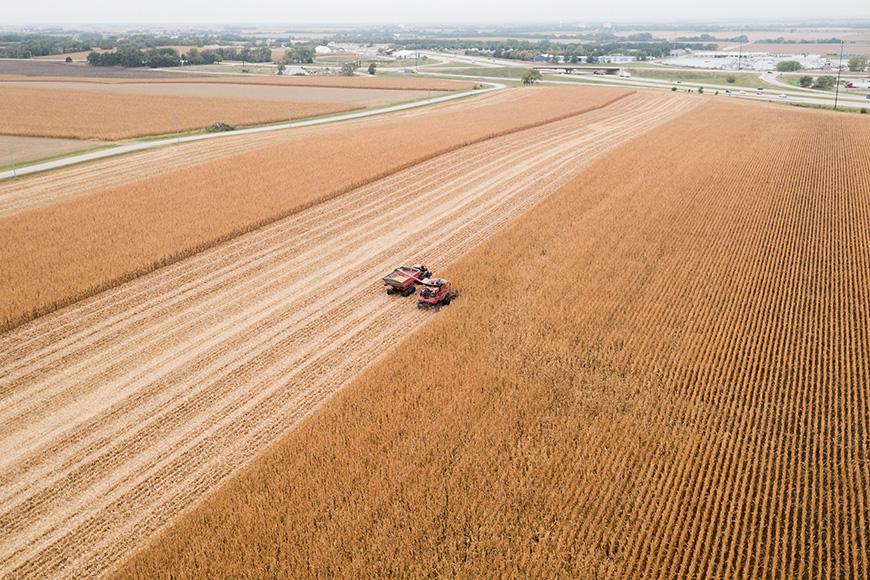
Weather is one of those “out of our control” factors we need to manage every year. The 2021 season brought unusually dry conditions to many areas in the Midwest, including Iowa, Minnesota, North Dakota, South Dakota and parts of Wisconsin. With very little precipitation from late May to mid-August, growers experienced a tremendous window of moisture stress. Then there are areas like the Southwest whose growers rarely see much moisture and manage drought year after year.
While 2021’s dry conditions brought certain challenges, they also provided several key lessons we can take forward to help mitigate risk of yield loss in future drought scenarios.
That’s where adjuvants can make a major difference. Herbicide chemistries have strong modes of action but are not typically good vehicles for getting into the plant. Adding an adjuvant helps that chemistry permeate the leaf cuticle and get to work.
Class Act® NG® adjuvant is a great option for these situations and made a big impact on farms this season. It contains AMS and CornSorb® technology, which includes some sucrose. This increases the stickiness of the solution, gives it more durability to heat and sunlight, and makes it take longer to dry. Plus, the plant perceives the sucrose as a food source and opens its stomata openings to receive it. This allows the chemistry to permeate the membrane of the plant tissue.
Drift and evaporation are another concern when it’s hot, dry and windy. InterLock® adjuvant is a strong deposition aid, canopy penetrator and drift reducer that helps keep the chemistry on target. This season, some applicators also marginally increased the amount of water in the spray tank to increase the spray volume. Then, they switched to a lower drift spray nozzle to create larger droplets and prevent evaporation. Small refinements along with elevated adjuvant use are reliable ways to combat these spray application challenges.
Today, that’s not the case. More than 40% of a crop’s yield is determined after tassel, and kernel counts only account for 45-50% of yield potential. That change is due to increased variance in kernel size and density. This means in-season management doesn’t stop at tassel or at R3. Season-long management is key to maximizing ROI potential and the viability of higher yield.
Plant health is a hard thing to define or measure, but we can measure the amount of ethylene in a plant, which is a naturally occurring “preserve and protect” hormone. Ethylene tells the plant to slow down metabolic and physiological processes like cell division and tissue development so it can focus on survival. This is detrimental from a production standpoint but if we can suppress or reduce ethylene production, we can reduce the chance of that plant slowing down or stalling out.
Plant growth regulators (PGR) like Ascend® Pro help balance stress hormones with growth hormones. Ascend Pro PGR contains a proprietary amino acid derivative to help optimize early-season plant growth for season-long performance across a variety of weather conditions. If you’re facing dry conditions but think you might get rain or know you have subsoil moisture to use later in the season, it’s a good idea to use a PGR to minimize stress responses and keep the plant producing.
Biostimulants like Voyagro™ are another strong option for stress mitigation. Voyagro biostimulant fertilizer links potassium with amino acids and peptides to aid in the movement of product within the plant. It’s designed to help drive yield potential on highly managed corn with less-than-adequate rainfall.
All photos are either the property of WinField United or used with permission.
© 2022 WinField United. Important: Before use always read and follow label instructions. Crop performance is dependent on several factors many of which are beyond the control of WinField United, including without limitation, soil type, pest pressures, agronomic practices and weather conditions. Growers are encouraged to consider data from multiple locations, over multiple years and to be mindful of how such agronomic conditions could impact results. Class Act, NG, CornSorb, InterLock, Ascend, Voyagro, CROPLAN and WinField are trademarks of WinField United. All other trademarks are the property of their respective owners.
While 2021’s dry conditions brought certain challenges, they also provided several key lessons we can take forward to help mitigate risk of yield loss in future drought scenarios.
Lesson 1: Today’s corn and soybean genetics are more resilient than ever.
Despite low moisture and hot conditions, many areas still exceeded yield expectations. One of the primary factors we have to thank is today’s modern genetics. Advanced corn and soybeans were put to the test this season and proved how well they can retain high yield potential throughout the season despite intense drought stress during vegetative growth stages.Lesson 2: Adjuvants are a must in hot, dry weather.
Hot, dry and windy conditions can be a major challenge for growers when making herbicide applications. When it’s hot and dry, plants close their stomata openings and divert their interception techniques to the roots, pulling energy, moisture and nutrients from the soil. When applying herbicides, we rely on the leaf tissue to intercept the chemistry.That’s where adjuvants can make a major difference. Herbicide chemistries have strong modes of action but are not typically good vehicles for getting into the plant. Adding an adjuvant helps that chemistry permeate the leaf cuticle and get to work.
Class Act® NG® adjuvant is a great option for these situations and made a big impact on farms this season. It contains AMS and CornSorb® technology, which includes some sucrose. This increases the stickiness of the solution, gives it more durability to heat and sunlight, and makes it take longer to dry. Plus, the plant perceives the sucrose as a food source and opens its stomata openings to receive it. This allows the chemistry to permeate the membrane of the plant tissue.
Drift and evaporation are another concern when it’s hot, dry and windy. InterLock® adjuvant is a strong deposition aid, canopy penetrator and drift reducer that helps keep the chemistry on target. This season, some applicators also marginally increased the amount of water in the spray tank to increase the spray volume. Then, they switched to a lower drift spray nozzle to create larger droplets and prevent evaporation. Small refinements along with elevated adjuvant use are reliable ways to combat these spray application challenges.
Lesson 3: Late-season management matters.
One thing we’re learning more and more every year is how much yield is determined late in the season. A couple decades ago, it was understood that most yield was determined by tassel so once you reached that point, your kernel counts were set, and you could predict your yield pretty accurately.Today, that’s not the case. More than 40% of a crop’s yield is determined after tassel, and kernel counts only account for 45-50% of yield potential. That change is due to increased variance in kernel size and density. This means in-season management doesn’t stop at tassel or at R3. Season-long management is key to maximizing ROI potential and the viability of higher yield.
Lesson 4: Stress mitigation strategies pay off.
There are many tools available to help mitigate stress in your crop. First, let’s discuss fungicides. This pesticide class does more than suppress fungus. Modern fungicides with the new SDHI active ingredients have beneficial plant health effects.Plant health is a hard thing to define or measure, but we can measure the amount of ethylene in a plant, which is a naturally occurring “preserve and protect” hormone. Ethylene tells the plant to slow down metabolic and physiological processes like cell division and tissue development so it can focus on survival. This is detrimental from a production standpoint but if we can suppress or reduce ethylene production, we can reduce the chance of that plant slowing down or stalling out.
Plant growth regulators (PGR) like Ascend® Pro help balance stress hormones with growth hormones. Ascend Pro PGR contains a proprietary amino acid derivative to help optimize early-season plant growth for season-long performance across a variety of weather conditions. If you’re facing dry conditions but think you might get rain or know you have subsoil moisture to use later in the season, it’s a good idea to use a PGR to minimize stress responses and keep the plant producing.
Biostimulants like Voyagro™ are another strong option for stress mitigation. Voyagro biostimulant fertilizer links potassium with amino acids and peptides to aid in the movement of product within the plant. It’s designed to help drive yield potential on highly managed corn with less-than-adequate rainfall.
Additional tips for growers in consistently dry environments.
Growers in the Southwest face dry conditions every year. Here are some tips to consider as you develop a management plan for next season.- Genetics and RTP scores: Select genetics with enhanced drought tolerance and consider a hybrid’s response-to population (RTP) score. All CROPLAN® corn hybrids have RTP ratings that indicate how well that corn hybrid responds to the increased stress of a higher seeding rate. If it can tolerate the added stress of a higher seeding rate, it can typically tolerate more stress in general.
- Seeding rates: Consider decreasing seeding rates to decrease early-season water use. This allows the plants to save soil moisture for later so they can use it during those important reproductive stages.
- Tillage: Adopt no-till or conservation tillage to preserve soil moisture. Tillage inherently dries out the soil so the less you can do, the better.
- Cover crops: They provide great soil conservation benefits if you have extra soil moisture to spare. In drought conditions, however, those cover crops steal the moisture you need to grow the crop itself. Cover crops can work as long as they’re terminated several weeks before planting.
All photos are either the property of WinField United or used with permission.
© 2022 WinField United. Important: Before use always read and follow label instructions. Crop performance is dependent on several factors many of which are beyond the control of WinField United, including without limitation, soil type, pest pressures, agronomic practices and weather conditions. Growers are encouraged to consider data from multiple locations, over multiple years and to be mindful of how such agronomic conditions could impact results. Class Act, NG, CornSorb, InterLock, Ascend, Voyagro, CROPLAN and WinField are trademarks of WinField United. All other trademarks are the property of their respective owners.


